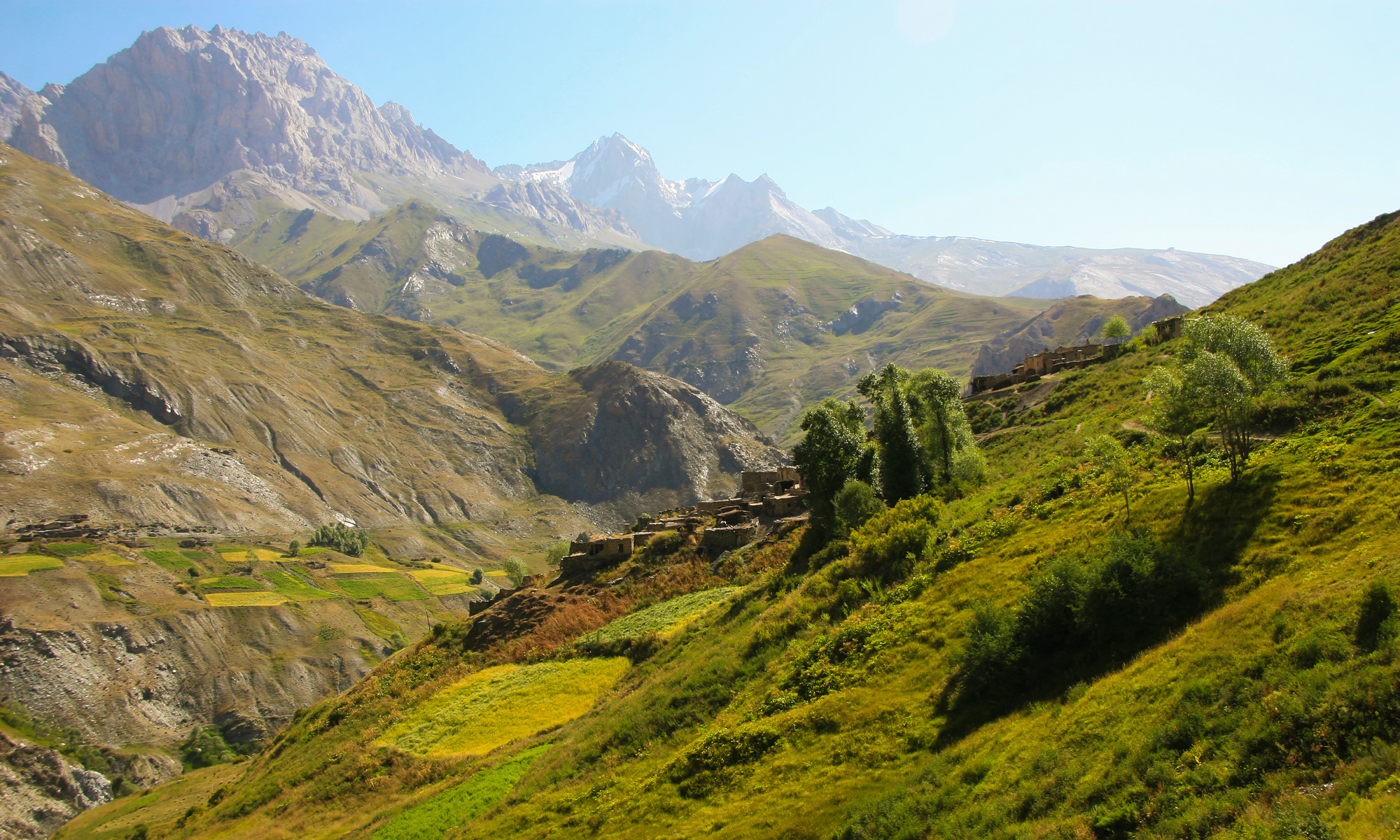On a late-autumn morning in the Yaghnob Valley, where the path threads past stone ruins and sloping goat pens, there are no signs for school—but the direction is clear. A group of children, notebooks clutched like talismans, walk through frost-bitten light toward a building that may or may not still be standing.
In these returnee villages of northern Tajikistan, education is not a system—it is a struggle. It is a form of improvisation. A hope held aloft by memory, repetition, and the quiet labor of teachers who bring water before they bring words.
In Yaghnob, where roads wash away and funding rarely flows uphill, the blackboard is not only a learning surface—it is a symbol of return, resilience, and what remains unfinished.
According to community surveys and public health documents, many Yaghnobi hamlets have no formal school infrastructure. Classrooms are assembled in abandoned homes, mud-walled rooms, or outdoors, under awnings stretched between trees.
One 2011 field report noted:
“Children carry chalk, but the wall has no surface. They write on stones or each other’s hands.”
Desks are rare. Libraries nonexistent. In some cases, one teacher manages all grades with only a pencil stub and a voice.
Yet even in these conditions, attendance—when schools operate—is remarkably high. Parents, many of whom remember Soviet-era literacy drives, push their children to attend, driven by a belief that education still holds the key to mobility, pride, and possibility.
Teachers in Yaghnob wear many hats—often literally. They serve as educators, janitors, firewood carriers, and sometimes medics. Most are either aging returnees with pedagogical experience from the Soviet era, or young recruits on short-term assignments who must walk hours to reach their classrooms.
A female teacher interviewed in 2010 shared:
“I teach grades one through four. I also bring the water, clean the room, and carry the firewood. There are no books. We use stories. Sometimes they teach me.”
Despite little support and even less pay, some teachers have stayed for years. Their work blends formal curriculum with oral pedagogy, drawing on folk tales, traditional counting songs, and seasonal proverbs to teach logic, language, and ethics.
Official instruction is in Tajik. But for most Yaghnobi children, it is not their first language. At home, Yaghnobi is the language of memory, discipline, and play. In school, Tajik is the language of textbooks—when they exist.
This disconnect creates a pedagogical fault line:
- Children stumble over abstract Tajik vocabulary
- Teachers lack bilingual training or materials
- Yaghnobi remains spoken but invisible—a language present in hallways, absent on paper
Still, the language persists: in peer corrections, in whispered side conversations, in the rhythm of questions asked between lessons. It is an undercurrent. Not official, but essential.
Across most Yaghnobi settlements, educational resources remain scarce:
- No regular supply of books or notebooks
- No heating in winter, often forcing closures for weeks
- No dedicated bathrooms or hygiene facilities, especially for girls
- No internet access, and almost no digital literacy tools
Where roads allow, some children walk 1–2 hours daily to reach functioning schools in larger villages like Anzob or Tagicharbog. But in winter, even those routes can disappear under snow or rockfall.
For many, the school year is not dictated by calendar—but by climate, crops, and contingency.
Though officially encouraged to attend, girls face layered obstacles. Cultural expectations often pull them into domestic labor by adolescence—caring for younger siblings, fetching water, cooking meals. Once menstruation begins, many drop out due to lack of privacy, stigma, or safety.
A 2012 interview captures the quiet resignation:
“I want to learn, but I’m ashamed. There is no place to change [pads], and the boys laugh.”
In Yaghnob, as elsewhere, gender gaps begin with missing infrastructure—but they widen through silence.
Despite it all, the valley continues to teach. Elders offer lessons in the form of stories, poetry, and prayers. One teacher spoke of a blind grandfather who came daily to class, recounting proverbs and historical events with startling clarity.
“He can’t read, but he remembers. When he speaks, the room listens.”
Some families have requested mobile libraries. Others envision traveling teachers, shared across neighboring hamlets. What emerges is a sense that education in Yaghnob need not look like education elsewhere—but it must be supported, sustained, and seen.
If the proposed Natural-Ethnographic Park in Yaghnob is to center cultural and environmental stewardship, education must be its backbone. Not just as a service, but as a right—and a tool for intergenerational continuity.
Proposals worth piloting:
- Train and incentivize local Yaghnobi-speaking teachers, with housing and support
- Develop bilingual primers rooted in oral traditions, agriculture, and seasonal life
- Provide heating, sanitation, and menstrual hygiene facilities
- Integrate cultural heritage and ecological knowledge into the classroom
- Create shared learning hubs between villages, where walking distance can be halved and resources pooled
These are not utopian asks. They are basic necessities for a region asked to return without infrastructure.
A school in Yaghnob might not have a roof. It might not have desks. But it has children who walk uphill each morning. It has teachers who teach by memory, by firelight, by force of will.
To invest in their education is not charity—it is justice. It is recognition that return without support is another form of exile. That a language without script is still a library. That a child who learns to ask “why” might one day learn to lead.
In the valley, there is a phrase:
“Chalk writes even on stone.”
The marks may fade, but the memory doesn’t.
Let that be our measure: not what is missing—but what persists.
